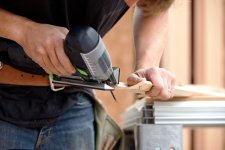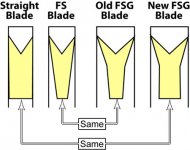festnoob
Member
- Joined
- Jun 13, 2010
- Messages
- 376
builderbob said:MrMac said:How is the vibration as compared to the bosch? I have a bosch and it's been a work horse, however its getting a bit shakey. (or I am [scared])
Does Festool have a blade that's similiar to the bosch T101A0 or T119B0?
Will the new jigsaw accept a collins coping foot?
Thanks!
Dudes (& ettes)...I took the carvex for a spin yesterday at the ToolNut while the rep was there and Sal Levecchi did his fantastic CMS demo. I have to say I'm VERY impressed with this saw. We did a bunch of ridiculous curvy and wavy cuts in both 3/4" ply and almost 2" poplar. Perpendicular is all I have to say!
On that note, I also just ordered a Collins Coping foot for my trion as it still fits that!
I think people are going to be very pleased!
I'm glad to hear you say that! I have to say, I've been doubting my decision to sell my triton in order to save for the carvex, but I'm excited as the days approach!


